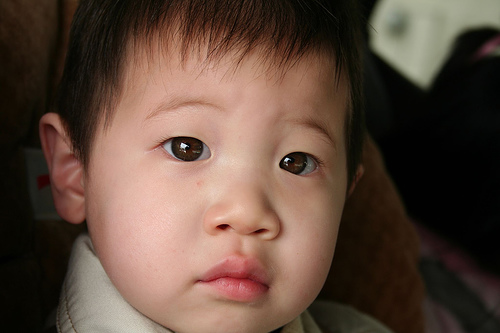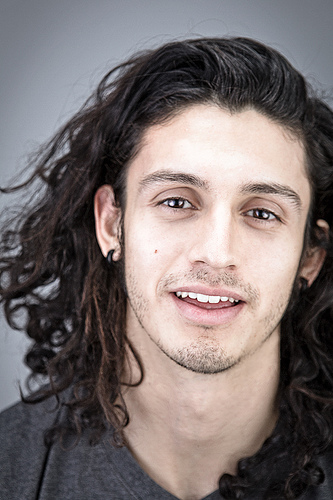Catchlights in Photography
Have you ever asked yourself why some of your pictures look lifeless, boring or empty? Observe the image; check if the eyes of your subject have a catchlight. If it doesn't, consequently it might be one of the reasons why your portrait is visually monotonous.
A catchlight, or better known as eyelights, is referred to the depiction of the chief source of light that makes an unusual glimmer or flicker. This glint could be typically within the eyes of the subject per se. This is a very important ingredient in adding life or tone towards your portrait and can be seen usually at 10 o‚'clock or 2 o‚'clock in the eyes, where it animates your subject most effectively.

2006_04.09 Isaac closeup by Christine Szeto on flickr (licensed CC-BY)
It is very likely to create diverse catchlights from any position, depending on the camera lens you use, the range and darkness or brightness, size and shape of the main light source, and the distance of the key light. Photographers frequently work with reflectors as a way to make their ideal larger and more eye-catching catchlights. However, using too much light can produce one or more catchlight. And this effect sometimes exaggerates the portrait.
At the same time, reflectors or other alternatives such as umbrellas and foils placed on planes can be positioned on the lap of their subjects or other almost-similar positions for the production of vibrant catchlights.

Mike Hernandez by Joshua Hoffman on flickr (licensed CC-BY-ND)
The positioning of your catchlights can be affected and controlled by the elevation and angle of your key light and fill light in the three-point-lighting. As these particular lights change, so does the catchlight that it generates on your subject. The key light is your primary foundation of light.
It is commonly installed in front of the subject, a little bit to one side (45 degrees). It brings the primary source of lighting in this setup.
The ambience of the portrait, its quality and necessary properties are well shown with this style of lighting. Compared with the key light, the fill light gives off less brightness. It lowers the shadow that the key light generates and is set on the side perpendicular to the key. In most cases, a key light is located at 4:30 along with the fill light at 7:30.
This setup adds amazing effect of profundity in the absence of excessive drama. Basically, this position for the key light is the most common in the three-point- lighting setup.
It is accordingly essential to set these lights on its right position for you to get the catchlight that you want. Once all these are properly installed, and your camera is properly ready, stunning and life-giving catchlights await your portraits.
To know more about digital photography check out other fields such as photography poses.




